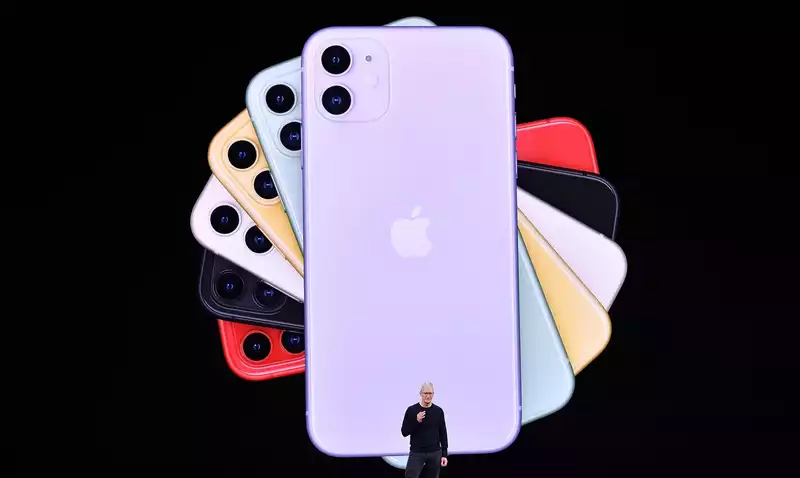During the holiday season, Apple saw iPhone sales rebound. But wearable products like the Apple Watch and Air Pods, as well as Apple's expanding array of services, are the driving forces that will really propel Apple forward in 2020.
Make no mistake, the iPhone remains an important part of Apple's business, with 61% of the $91.8 billion in sales from the smartphone in the fiscal first quarter ending December 28. During the holiday shopping season iPhone sales were up 8%, and Apple sold about $56 billion worth of phones.
An 8% increase may not seem like much, but remember where Apple was a year ago. It was a winter of frustration for iPhone shoppers when cell phone sales fell 15% and Apple warned that business was falling short of expectations.
No such warning was issued this year, and customer response to the iPhone 11, which launched in September, was positive. Apple CEO Tim Cook said the 6.1-inch iPhone 11 was the top-selling model each week during the quarter, but the iPhone 11 Pro and iPhone 11 Pro Max were also among Apple's top sellers. In other words, despite Apple's lower-priced iPhone XR and iPhone 8 offerings, customers were still getting the newer models. [Apple CFO Luca Maestri said, "I think the mix [of iPhones] helped in the first quarter and is helping with guidance for the second quarter. The iPhone 11 Pro and 11 Pro Max have been very well received by customers, and that obviously helped with the mix."
While Apple is no doubt pleased with the iPhone's return to growth, that's not the real goal. Both the services and wearables segments of Apple's business saw double-digit growth in the past quarter. The services segment grew by 17% and the wearables segment by 37%."
The growth in services is not surprising. Apple has long set a goal of doubling its services revenue in 2016 by this year, and the company is well on its way to achieving that goal. In the just ended quarter, Apple Music and iCloud sales hit record highs, and Apple Care sales also hit a quarterly high in December.
More importantly, subscriptions are reaping the benefits, with Apple launching subscription news, gaming, and streaming services throughout 2019. The number of paid subscriptions reached 418 million, up 120 million from the previous year. Apple expects to reach its current goal of 500 million paying subscribers during the March quarter and now aims to reach 600 million by the end of the calendar year.
The wearables numbers were even more impressive, with sales exceeding $10 billion for the first time, this despite limited supply of both the AirPods Pro and Apple Watch Series 3 during the quarter.
Speaking of the Apple Watch, it set a new record for sales. According to Cook, 75% of those who purchased an Apple Watch during the vacations were first-time buyers of Apple's smartwatch. This may not sound that impressive given that the smartwatch category is relatively new for Apple, but from the company's perspective, it is broadening its installed user base by attracting customers who use other Apple products and services This would mean.
"With each purchase of an Apple product, customers become more deeply embedded in the ecosystem. They love the experience, and from that perspective, I think each of our products can facilitate another."
The only negative aspects of Apple's quarter were year-over-year declines in iPad (-11%) and Mac (-3%) revenue. However, Apple executives said the year-ago quarter was difficult to compare; in the same period of 2019, Apple had introduced a new iPad Pro and new MacBook Air and Mac Mini models.
Apple is certainly bullish about its outlook for the next quarter, with Wall Street analysts expecting sales in the $63 billion to $67 billion range for the three months through March. Apple's sales for the same period last year were $58 billion, so growth of 9% to 16% is projected.
.









Comments